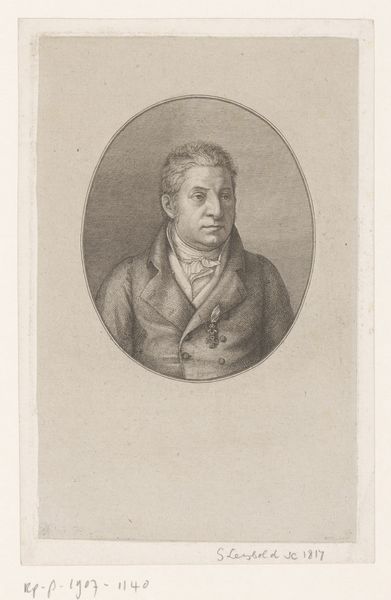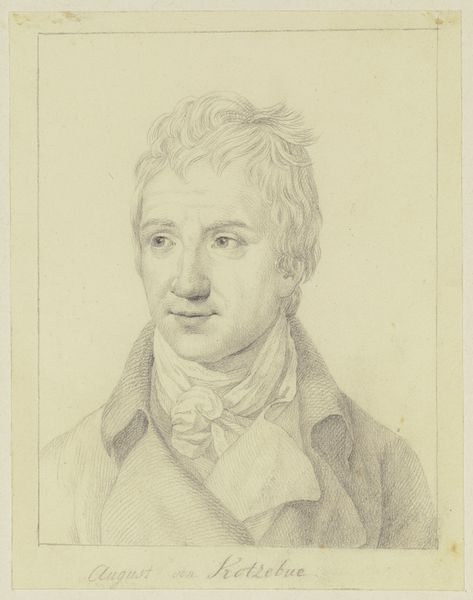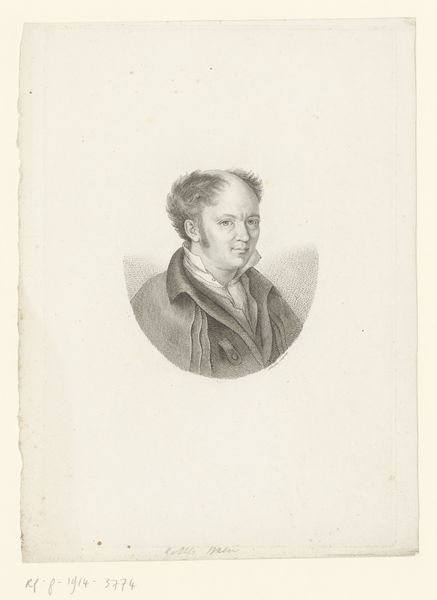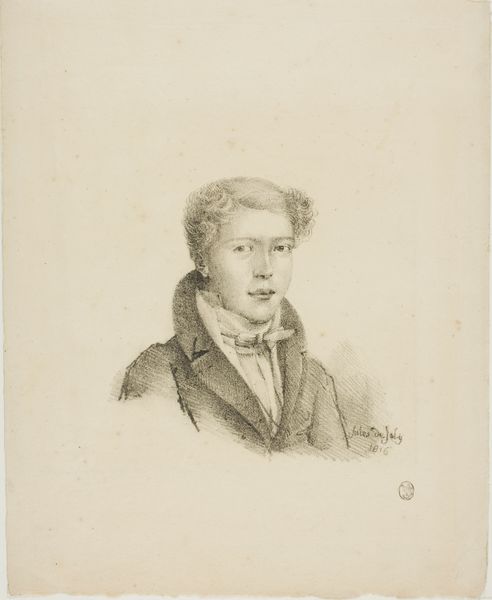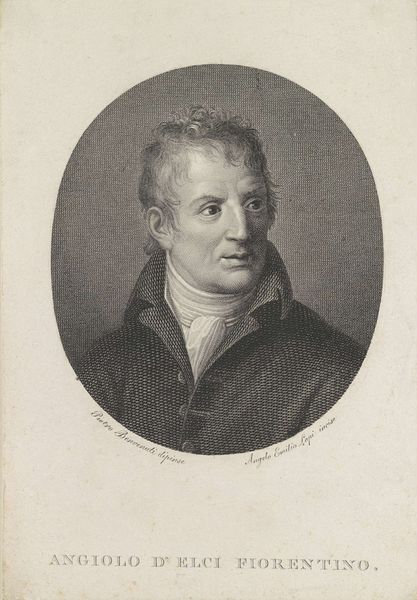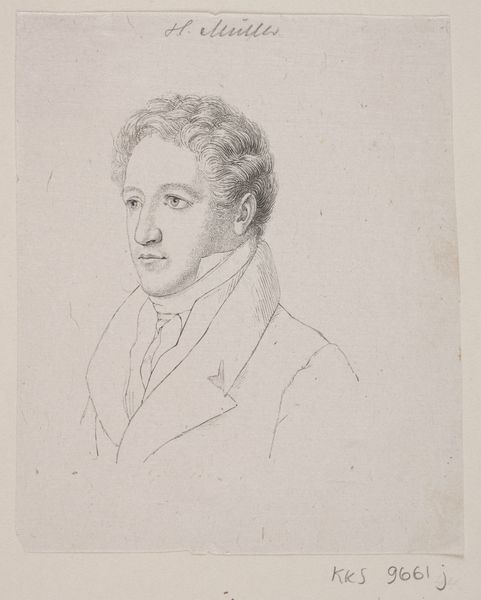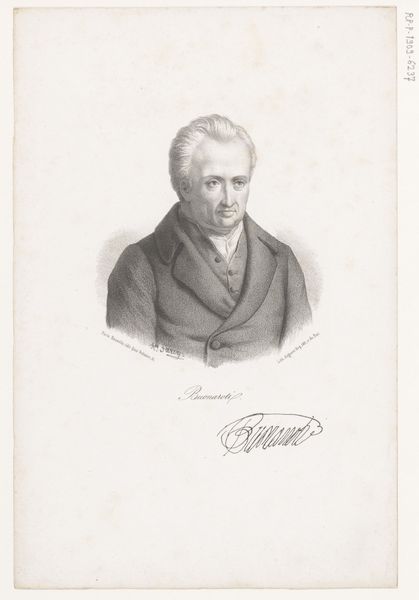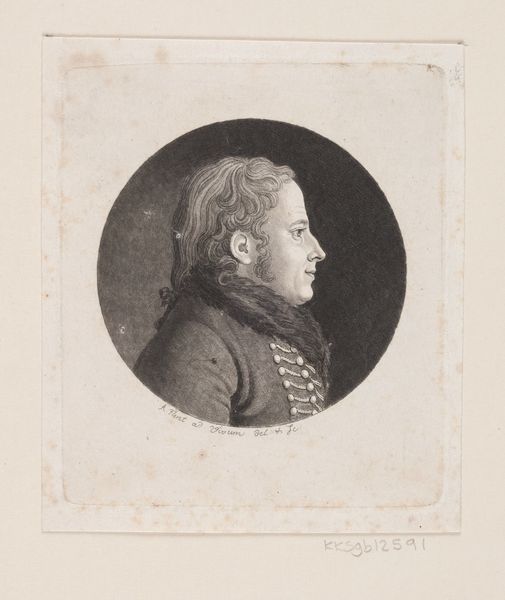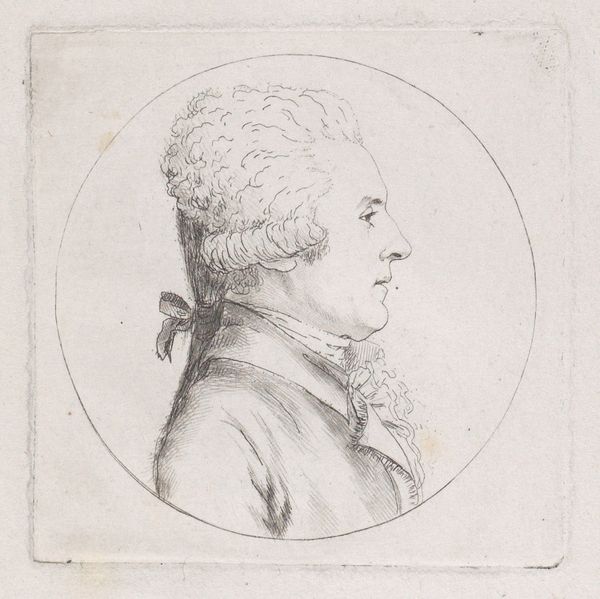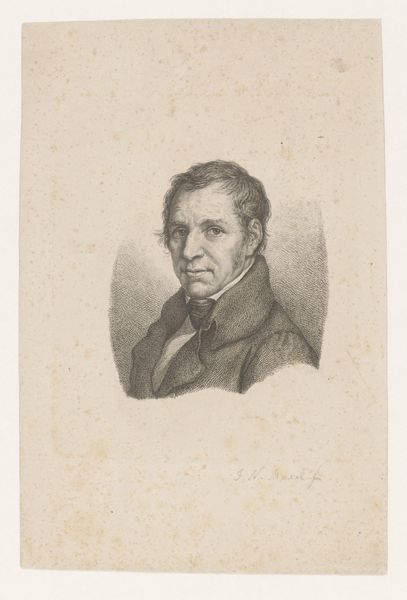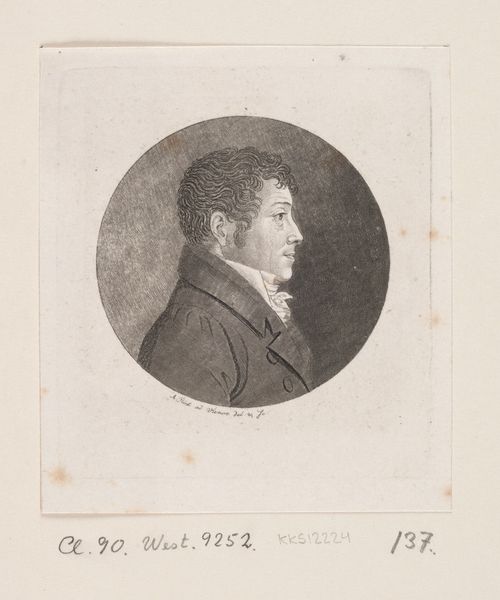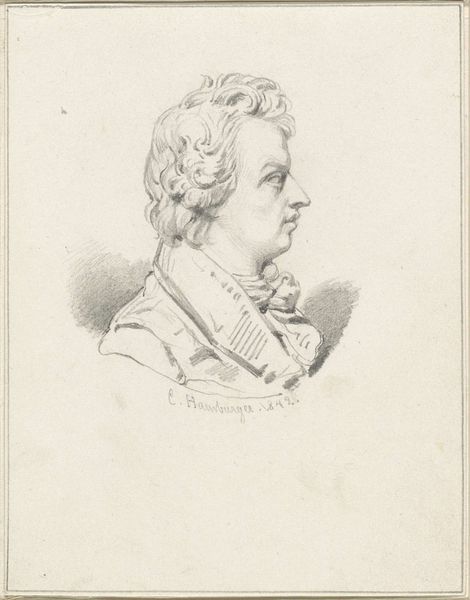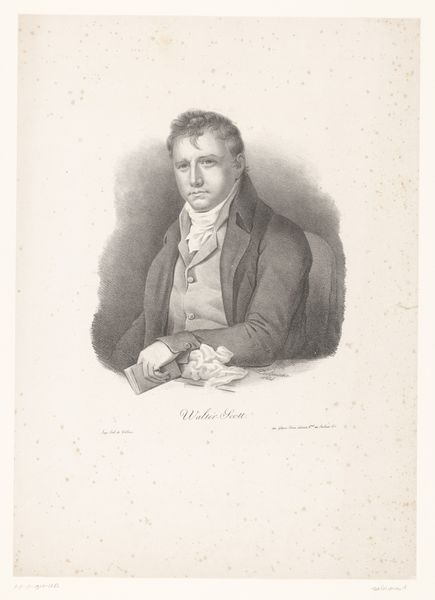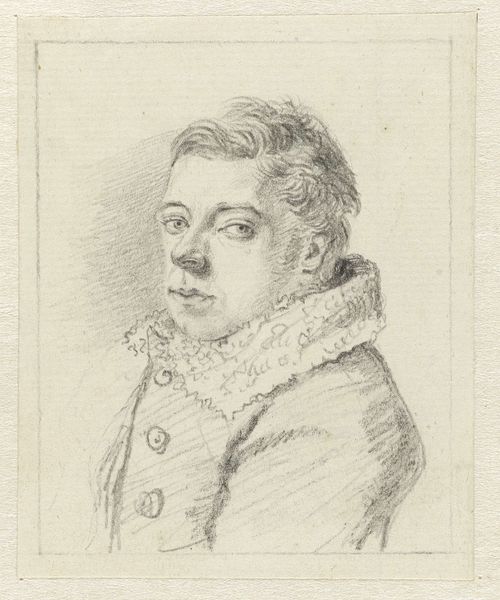
drawing, pencil
#
portrait
#
drawing
#
charcoal drawing
#
pencil drawing
#
romanticism
#
pencil
#
portrait drawing
Dimensions: height 86 mm, width 58 mm
Copyright: Rijks Museum: Open Domain
This self-portrait by Friedrich Georg Weitsch, created with etching, captures the artist in a moment of self-reflection. Note the subtle draping of fabric around his shoulders, a motif echoing the classical Roman toga. This garment, far from merely decorative, is a deliberate reference to intellect and artistry. We find similar drapery in countless depictions of philosophers and artists throughout history, signaling wisdom and creative inspiration. This motif is traceable back to ancient sculptures and Renaissance paintings. Consider the Renaissance portraits of scholars and artists, where similar garb symbolized learning. Over time, the toga evolved in meaning, from symbolizing citizenship to representing intellectual pursuit. In Weitsch’s portrait, it reflects a conscious connection to a historical continuum. This self-portrait invites us to consider how artists consciously position themselves within a larger narrative. It is a powerful statement about the role of the artist as both observer and inheritor of cultural memory.
Comments
No comments
Be the first to comment and join the conversation on the ultimate creative platform.
